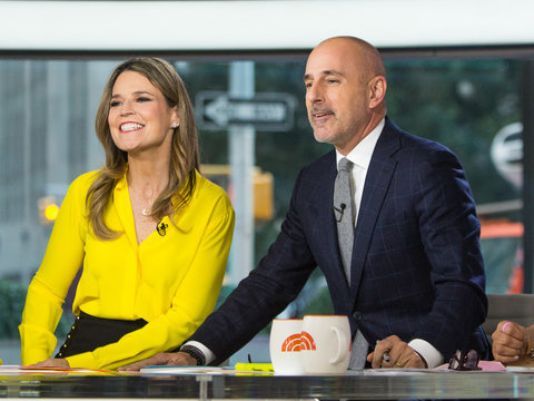There May Be As Many As 8 Victims, Lauer Breaks His Silence
By Erin Jensen
If your car is doing the driving, how will you pass the time while you travel? If the entertainment industry has its way, you'll be watching its latest movies and TV on a big screen inside your self-driving car. Maybe you'll engage augmented reality or play video games. Hollywood is starting to take a serious look at what could be a huge opportunity in a new age of self-driving cars: Seizing a big chunk of the time that people used to spend behind the steering wheel to get them to focus on entertainment. Self-driving cars represent "one of the biggest expansions of time for entertainment," said Thomas Gewecke, chief digital officer for Warner Bros. The planning effort shows that with self-driving cars already taking to the streets in test programs around the country, entrepreneurs and big companies alike are considering the money-making implications. It's a serious initiative. Intel, the company that has become a big player in self-driving technology with its $15.3-billion purchase of automotive sensor maker Mobileye earlier this year, announced a joint program this week with the Warner Bros. studio to create a self-driving car packed with entertainment. That's just the start. The concept car, plucked from a fleet of self-driving cars that Intel already operates, will incorporate ideas that go well beyond turning a car into a screening room on wheels. For instance, why not be able to add augmented reality to what you see when you look out the windows of your car? Gewecke, who joined Intel CEO Brian Krzanich in making the partnership announcement at the Los Angeles Auto Show, said you might be able to see the digital image of monsters flying over the cityscape or transform the interior of your car into the Batmobile. Far off? Not really. General Motors announced Thursday that it will have a test fleet of completely driverless cars plying some major cities, including San Francisco, by 2019. By 2025, it envisions self-driving cars as a common part of ride-hailing fleets. STORY FROM EXACT SCIENCES 5 easy ways to maintain healthy habits while you’re on-the-go Waymo, the self-driving division spun off from Google, is lining up volunteers to participate in testing of driverless cars in the Phoenix area as passengers, said John Krafcik, Waymo's CEO, also speaking at a forum at the auto show. There would be no human in the front seat. Waymo has logged four million miles of self-driving on public roads with its test fleet. For automakers and services like Waymo, the biggest issues remaining to be licked involve safety. As envisioned now, passengers will be alone in self-driving vehicles with no one behind the wheel -- if there even is a wheel -- which allows them the free time to read, watch TV or play games. Toyota, however, sees things differently. Toyota sees people as needed in a standby mode for emergencies even when cars are capable of driving themselves. It calls it the "guardian" mode, keeping a watch on the driving, instead of "chauffeur" mode, in which the car does everything. The most likely scenario is that cars will have both capabilities, predicts Gill Pratt, CEO of Toyota Research Institute. Self-driving cars will bristle with sensors that still allow drivers to step in as needed and also will have another set that will allow them to completely drive themselves, predicts Gill Pratt, CEO of Toyota Research Institute. Then, the two systems will monitor each other for anomalies. There's no discounting the role of having a human aboard, he said. "The heart should be 'guardian'" mode.
|
.
Any original material on these pages is copyright © BishopAccountability.org 2004. Reproduce freely with attribution.
